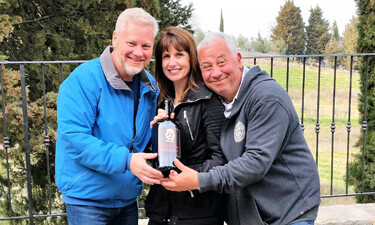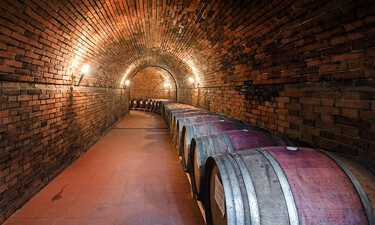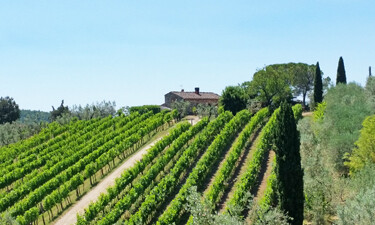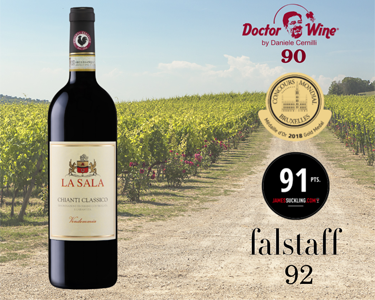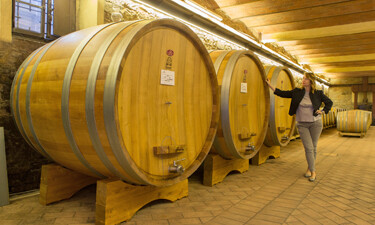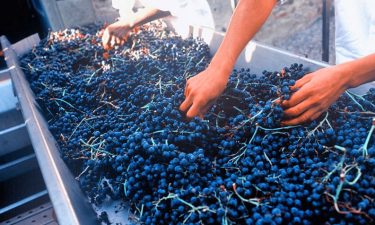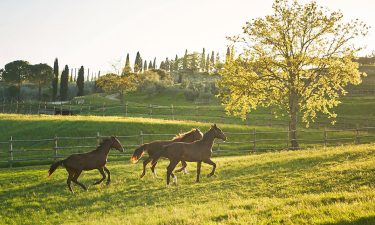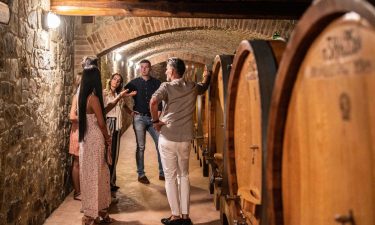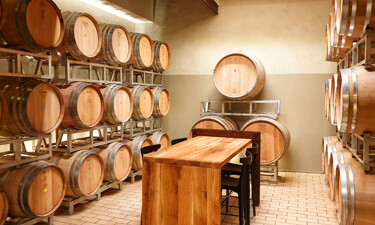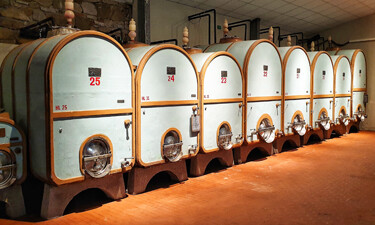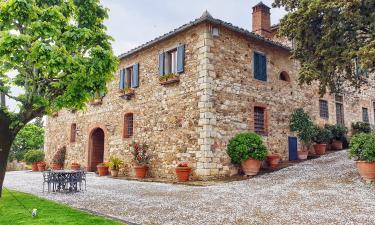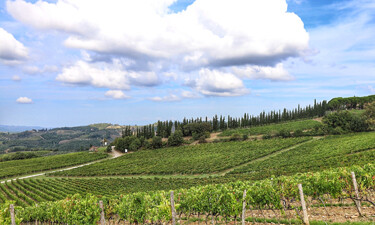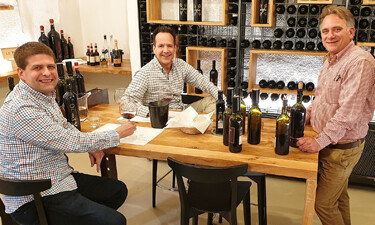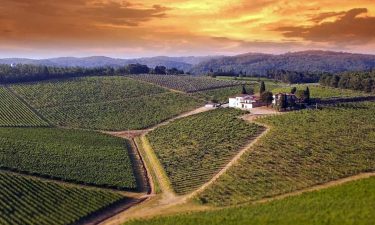My favorite Tuscan wineries
My favorite Tuscan wineries are all family estates, some of medium size, while others are very small indeed. I often get asked how I choose them…the answer is simple. I choose wineries where the quality of the wines, and the quality of the welcome go hand in hand. Each aspect is equally important, and not all wineries have a combination of the two. They are the essence of my Private Tuscany wine tours.
I’ve visited many estates over the years, and I’ve narrowed it down to a small handful who satisfy my requirements to the full. I’m not concerned with how famous they are, in fact I avoid the big names. Visits last from one and a half to two hours, and we take in two estates. We also take a leisurely drive through the iconic Tuscan scenery and I’ll give you ample time for photos. I assure you of a representative experience of both Chianti and Super Tuscan wines.
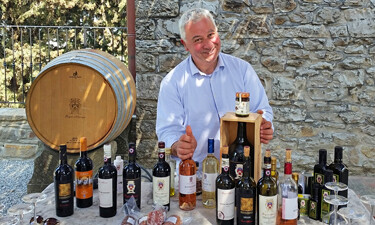
The annual production is only 12000 bottles a year between Chianti, Chianti Reserve, and a Super Tuscan based on Merlot and Syrah. Maurizio only uses his own estate grown (organic) grapes, and though he could buy grapes to increase his very limited production, he doesn’t trust other growers. He prefers to produce less, but produce well. His motto is “to make good wine your need good grapes.” As an added bonus, the olive oil from his centuries old orchard is something to write home about too. Your visit here will be totally private, and you’ll have the pleasure of meeting Maurizio in person who always finds a way of charming my guests with his disarming personality.
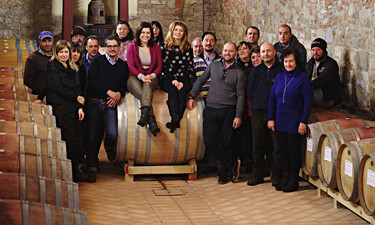
Monterinaldi has eighteen single Vineyards spread over 136,000 acres. The grapes grown are Sangiovese, Petit Verdot, Syrah, Gamay, Merlot, Cabernet-Sauvignon, Cabernet-Franc, and other native Tuscan varietals. After a four year experimental period, organic management has been extended to the entire property and is certified as of the 2017 vintage.
The whole wine making process takes place on the estate, using only estate grown grapes. The Tradition of Tuscan wine making methods is a fundamental principle at Monterinaldi, and their primary goal is to offer Chianti Classico in its most traditional form, however taking advantage of all the recent technology possible. Their other claim to fame is a superb Super Tuscan.
The ancient underground cellars make the perfect environment for aging wine. Here their Chianti Classico is first kept in barrels (french oak tonneaux and barriques) and then refined in bottles, for periods ranging from 6 months to 2 years. Last but certainly not least they have one of the happiest staff in the whole region which is why Monterinaldi is a favorite stop of my Wine Lover’s Tour. They are always eager to make your visit a memorable one; and all my guests over the years have confirmed this last statement.
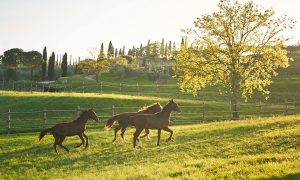
Just one example: after hand-picking, the grapes are placed on a conveyor belt where a two stage selection process is carried out. One for the clusters and one for the berries. Only the best examples continue the process, while all the rest become compost.
The results are now coming in, with numerous recognitions in the press. Above all, I value the praise from my guests who I take there on a regular basis.
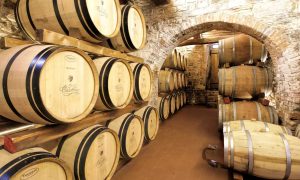
The vines are cultivated according to the most advanced viticultural trends, meaning high density vineyards and a minimal number of clusters per plant. Harvesting is strictly manual in order to prevent damage to the grapes before they reach the cellars, and also permit the pre selection of the best clusters for the top wines.
Once in the cellars the must ferments at controlled temperature with long maceration periods, and all is carried out with meticulous attention to detail. This allows the creation of fresh wines of great olfactory richness, but counterbalanced with structure and power.
Ageing is carried out in Slavonian oak barrels for Chianti, and French oak barriques for the Super Tuscans. The excellence of Carobbio wines is the result of a rigorous project, in which each vineyard has a specific role, each step is the subject of meticulous care, and every action is a precise choice.
Casa Emma Casa Emma Wine Estate, established in 1969, is located in the Chianti Classico region, at the very heart of Tuscany, continues a proud winemaking heritage in the prestigious appellation of Chianti Classico D.O.C.G. Surrounded by natural beauty with dreamy landscapes, splendid sunsets with timeless views and atmosphere, Casa Emma is a place with a lively and dynamic history rooted in the centennial tradition of Chianti Classico, and a reputation for sophisticated wines showing elegance and complexity.is a small gem that captures all of Tuscany’s beauty.
HANDWORK AND HARVEST
To preserve the vines and guarantee excellent fruits, almost all the operations in the vineyards are carried out manually. Manual picking remains the tradition at Casa Emma. The grape harvest is a very important moment for the winery and completes the work done in the vineyards throughout the whole year. It is not just harvesting; it’s is the selection done strictly by hand of the best grape clusters that will ensure a high-quality level of wine.
ORGANIC FARMING
Casa Emma follows biodynamic and organic viticulture principles. The vineyards are treated with natural methods, without using pesticides or phytosanitary products. Only natural composts are used all of which are produced 0n the farm.
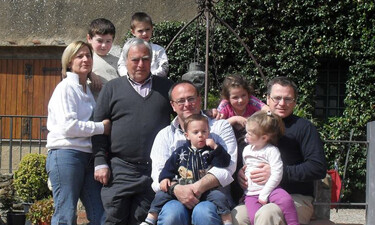
With pride and passion they produce wine “as the weather permits.” This means a lot of tradition with just a hint of modern technology. They insist on saying “our wines are made with sunshine and rain,” and consequently will be different every year. Unlike the big corporations who produce standardized wines time after time, no matter what. One should ask how do they do that…is it all grape juice? As often happens with the smaller Tuscan wineries, the vineyards at Castellinuzza are cut out of the hills on Terraces. This makes viticulture very difficult, but the scenery for visitors is a true feast for the eyes. I often visit this winery at midday for a genuine home cooked lunch. The meals are prepared by the ladies of the house and of course we’ll be tasting their excellent Chianti wines and genuine olive oil.
Azienda Agricola Altiero
Altiero is one of those Tuscan wineries that represent a new generation, returning to the land that was belonged to their grandparents. This tiny family estate is run by Paolo and his wife Samuela, with a little help from Paolo’s parents whose duties also include babysitting. Paolo inherited the property that had been left unattended for some time, but he decided it would be his life. In fact the name of the estate “Altiero” is the first name of Paolo’s grandfather. He graduated in Agriculture in the year 2000, and by 2001 he was the youngest wine maker in Europe. His first products were “garage wines” in the sense that his cellar was his garage. Seeing his son’s passion, Paolo’s father Maurizio decided he would quit his lumber business and became a very important helping hand.
They’ve come a long way since the garage days, and now have modern high tech cellars where they produce outstanding Chianti, Chianti Classico, a Super Tuscan and a Rosè. The emphasis is on traditional Tuscan wines, which means fruit and a bright acidity which lends them to be consumed with hearty food. In fact this is one of the wineries of my Tuscan Family Winery and Home Cooked Lunch Tour where you will find out just how good Chianti can be with the right food. The meals are prepared by Samuela, who though not a chef never ceases to amaze my guests with her cooking. Many state it’s the best meal of their holiday, and you can believe them. Last but not least they produce some of the best olive oil you can find.
La Sala
Of all my favorite Tuscan wineries, La Sala has one of the longest traceable histories going back to 1260. It’s belonged to various noble Florentine families during the centuries, but here we’ll talk about more recent events.
The basis of what the estate is today was established by Laura Baronti who owned it from 1981 to 2014. Together with her oenologist (wine maker) Gabriella Tani, she built a solid reputation for the excellence of their Chainti Classico wines. Particular prestige has always been associated with their supertuscan ” Campo all’Albero” which is a 50/50 blend of Cabernet & Merlot. It’s still produced today, and it’s as good as ever without the exaggerated prices of some of the more famous supertuscans.
Franceso Rossi Ferrini who was already the owner of another the prestigious estate called il Torriano, acquired La Sala in 2014. He immediately implemented a modernization program both in the vineyards and the cellars. The estate is now fully organic with sustainable farming which respects bio diversity.
The estate has vineyards with altitudes that vary between 500 & 1150 feet, and varying exposition to the sun. This means varying grades of ripeness, and the possibility of harvesting depending on requirements for a given season. The estate covers a total of 173 acres, of which only 79 are dedicated to vineyards.
By the way. All Chianti wines are made according to whatever the weather gives. There’s no irrigation in the field, and far less “manufacturing” practices in the cellar which can be common in many parts of the world. Of course modern wine making processes have reached a fine degree of perfection, and it’s possible to make an acceptable product even in the lesser seasons. If it’s a very bad season Chianti isn’t made, but fortunately this happens rarely and the last ten years have given good to outstanding wines. The point is; Chianti wines are different every year, as opposed to always being the same no matter what the weather. I suggest you be wary of what you’re drinking with standardized wines.
